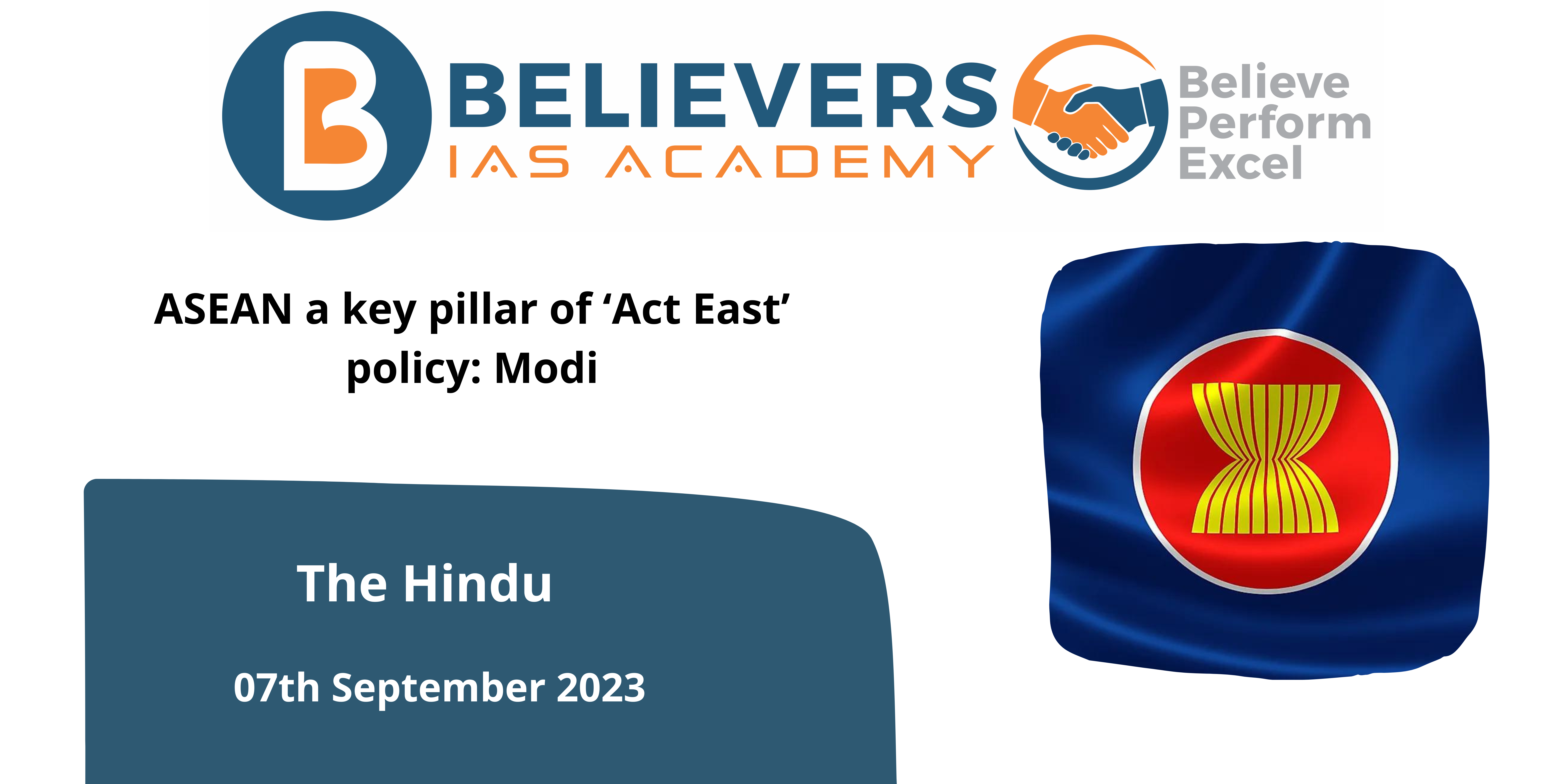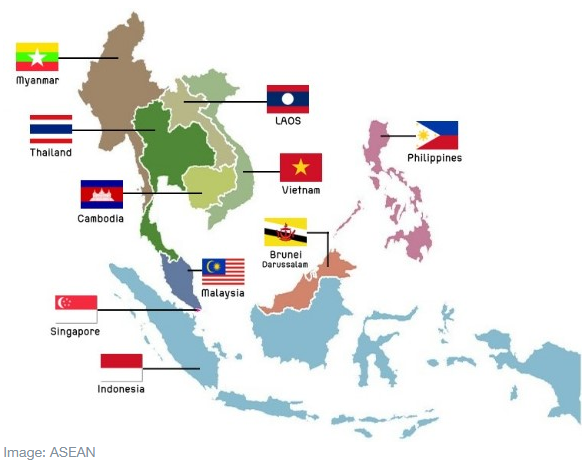ASEAN a key pillar of ‘Act East’ policy: Modi
What is ASEAN?
- ASEAN is an acronym that stands for the Association of Southeast Asian Nations. It is a political and economic union of ten Southeast Asian countries. Brunei, Cambodia, Indonesia, Lao PDR, Malaysia, Myanmar, the Philippines, Singapore, Thailand, and Vietnam are the members.
- The governments of Indonesia, Malaysia, the Philippines, Singapore, and Thailand founded ASEAN in 1967. The organization’s goals are to support Southeast Asia’s peace and security, economic prosperity, social improvement, and cultural development.
- “One Vision, One Identity, One Community” is ASEAN’s motto. ASEAN Day is celebrated on August 8th.
- The 43rd ASEAN Summit will be held in Jakarta on September 5-7, 2023.
What role does India play in ASEAN?
The involvement of India in ASEAN (the Association of Southeast Asian Nations) is diverse and has evolved. India’s relationship with ASEAN is led by its “Look East” strategy, which was later updated to “Act East,” indicating a more proactive and dynamic approach. Here is a summary of India’s position in ASEAN:
- Strategic Alliance: India and ASEAN have a strategic alliance. This collaboration spans multiple domains, including political, economic, security, and sociocultural cooperation. It underlines India’s commitment to strengthening ties with ASEAN members.
- Economic Cooperation: Economic cooperation is an important part of India’s connection with ASEAN. The ASEAN-India Free Trade Area, which aims to encourage trade and investment between India and ASEAN member countries, is a member of India. In addition, India has been an active participant in regional economic conferences such as the ASEAN Regional Forum (ARF) and the East Asia Summit (EAS).
- Security and defence: India works with ASEAN member countries on security and defence matters such as counter-terrorism, maritime security, and disaster management. To improve security in the Indian Ocean and Southeast Asian regions, the Indian Navy undertakes joint exercises and patrols with many ASEAN states.
- Cultural and Educational Exchanges: India encourages cultural and educational exchanges with ASEAN countries. This comprises student grants, cultural events, and academic institution connections.
What are the recent developments in the ASEAN summit in Indonesia?
- Prime Minister Modi visited Indonesia to attend two major summits: the 20th ASEAN-India Summit and the 18th East Asia Summit (EAS).
- Leaders from ASEAN member countries, as well as other significant regional and global entities such as Australia, China, India, Japan, New Zealand, South Korea, Russia, and the United States, attended the East Asia Summit.
What were the issues that were discussed between India and other ASEAN countries?
- India and ASEAN have a Comprehensive Strategic Partnership, a high-level relationship that has energized their relations.
- Modi stated his intention to discuss a variety of regional issues during the summits, including:
- Food and energy security: Regional initiatives to maintain stable food and energy supply.
- Environment: Addressing environmental issues and supporting environmentally sustainable behaviours.
- Health: Discussing healthcare collaboration, which is especially important in light of regional health issues.
- Digital Transformation: Exploring the potential for digital innovation and technological collaboration in the region.
What was the purpose of the meeting between Russia and India?
- Bilateral Relations: The meeting’s goal was to promote and expand India-Russia relations. Both countries have a long history of close and strategic cooperation, and such meetings allow them to address various facets of their relationship, such as political, economic, and defence cooperation.
- Preparation for Upcoming Summits: Given that the meeting took place immediately before the G20 Summit in Delhi, it’s possible that the ministers addressed the summit’s agenda and priorities. This could include conversations about significant problems that will be highlighted at the G20 meetings.
- Bilateral and Multilateral Cooperation: This means that the ministers likely discussed the status of current agreements and efforts between India and Russia, as well as potential areas for future collaboration.
- Addressing Differences: Russia objected to certain phrasing on Ukraine in the G20 Leaders’ Declaration. The conference may have included discussions about how to resolve these differences and reach a consensus at the summit.





